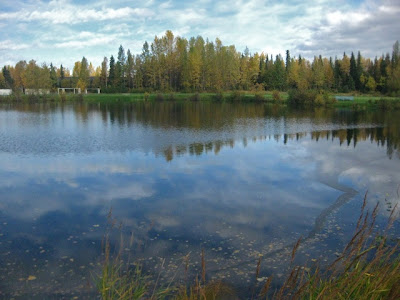I'd say that this is pretty elementary stuff - a dialogue about people going to someone's birthday party.
A: Wang Peng, what are you doing now?
B: I'm reading.
A: Today is Gao Xiao Yin's birthday. This evening we're going to have a dance party at her place. Can you come?
But elementary in Chinese is relatively advanced in a lot of other languages. You've got the tones to learn (what tones are) (hearing the tones) and more than that, you've got to memorize each character. Counting through the back of the book's glossary it looks like there's about 350 characters that we're supposed to know now.
How much could you say if you only knew 350 words of English? [Here's a list of the 300 most common English words to give you an idea of both how much it is and how limited it is.] Actually, speaking Chinese with just 350 words is probably easier than English because there is no conjugation of verbs for present, past, and future tense. Some of that gets conveyed with words like today, next week, etc. And there are some words you stick into the sentence that shows it's happened already or it's happening now. (The character 呢 at the end of line one of the dialogue in the photo is supposed to show that she's asking about what he's doing right now. Or you could just say "right now" instead.) So you don't have to fuss with I am, I was, I will be, etc.
But, there's always the characters. And while there are some basic repeated parts of the characters - radicals - there's no real phonetic way to know how to pronounce each character. You have to memorize each one. But, knowing the radicals and their meaning can help in that task.
There is so much more online help today than there was in the past. Chinese dictionaries are ingenious, but also painfully slow to use. If you were looking up a character you had two options:
Option 1. Stroke count.
a. count the strokes in the character;
b. then in the front of the dictionary there is a list of characters starting with one stroke, two stroke, three stroke, etc. If the character you want to look up has five strokes, you go to the five stroke characters. They're listed in stroke order (there's a set of rules for which stroke comes first, second, etc.) Or you can just go down the list until you find the one you are looking for.
c. find the character you are looking for
d1. in some dictionaries it then has a page number to go to
d2. in other dictionaries it has the pinyin (phonetic alphabet) and then you can look it up alphabetically in that dictionary.

On the right is a page from a Chinese dictionary. First you have one stroke characters. One is a horizontal line 一 and two is two horizontal
lines 二。You can see there are only two one stroke characters listed and you can find them on pages 1037 and 1049. Then there are more two stroke characters. The first stroke in a character is the horizontal line stroke (if there is one). There are four such two stroke characters listed. Then the characters that start with the second stroke - the vertical line. Just one listed, on page 60. Then a diagonal stroke to the left. These are just the two stroke characters. Imagine trying to see the 10 stroke characters. I often needed a magnifying glass.
As you can imagine, this took a while. New students don't always count the strokes right. Then you you have to go through long lists of characters to find the one you are looking for. (There are a lot more three, four, five and more stroke characters than one and two stroke characters.)
Option 2. Radical
This is similar, but instead of starting with the number of strokes, you start with the main radical in the character, then go down the list of all the characters with that radical. This assumes you can figure out the radical.
I spent more time thumbing through the dictionary to find the characters in the past attempts to study Chinese than learning the characters.
But now you can look up characters online. Yellowbridge.com let's you find the character
a. by writing the English
b. writing the word in pinyin (the phonetic alphabet)
c. writing the Chinese character - yes the have a little box (you would click the brush on the real page) where you can make the strokes with your cursor. But you have to be close enough that the computer can figure out some characters it thinks you made, then you have to pick out your character from the list it gives you. But that's true of each of these.
 |
| Screenshot from Yellowbridge.comhttp://www.yellowbridge.com/chinese/chinese-dictionary.php |
And once you get the character you can listen to the pronunciation, see the etymology, see examples of other words that use the character. Yellowbridge even has an online flashcard system that uses the vocabulary lists from the most used Chinese textbooks identified by each lesson. So I could pick my book and chapter and do the flashcards online. Here you can see the flashcards for the chapter we worked on today in class - this is just the vocabulary for the second dialogue of the chapter.
ArchChinese, which I found looking for the stroke order rules above, also looks like a lot of help. It says it's been put together by Chinese teachers for K-12 and university student in the US.
So, things are much easier now. And there are lots of different websites that offer great help. And there are lots of YouTube videos so you can listen to the sounds. But none of that substitutes for memorizing the characters and learning the dialogues and the grammar patterns, in writing and orally, which use very different parts of the brain. It just makes it a little easier.
So, since last night was the last class until the spring, I thought I would recover that part of my life spent preparing each week for Chinese class. But no. We got homework to keep us busy until we start again, which, fortunately is not until late February. (This is a community class, not a credit class.) But much of what we need to do is review all the vocabulary, dialogues, and grammar that we've covered so far. But we're also supposed to look ahead to the next six chapters (to the end of this book.)
But, I have to say, while my Chinese is very rudimentary, I am finding myself thinking in the patterns we've been learning and the vocabulary seems to be sticking a little better than in the past. I think I've laid down enough tracks in my brain that this time it's working.














































